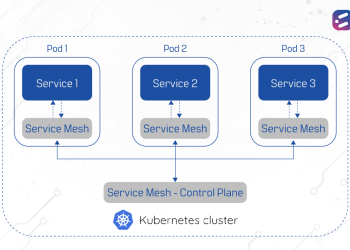Kubernetes vs Serverless – the debate has been on for a while now. Which approach offers better agility, scalability, and computing performance? And the answer is, quite simply, that it depends on your use case.
Having said that, though, making a choice between these two popular architectures must begin with an understanding of what each of them brings to the table, where they excel, and how they compare. So here goes…
What is Kubernetes?
Also known as K8s, Kubernetes is a portable container orchestration platform that can simplify the management of container-based workloads. This open-source system is used to automate the deployment, scaling, and management of containerized applications.
What about Serverless?
Serverless computing is an architecture where code execution is managed by a cloud provider. Serverless relies on functions, or functions-as-a-service (FaaS) as it is called, where developers write microservices – or functions – and execute them directly without any context regarding the underlying server.
What are the advantages of Kubernetes?
- Automation
Kubernetes, being an orchestration system, automates processes of applications and services deployment that were earlier carried out manually by technical teams. - Scalability
Kubernetes is inherently scalable. It is designed on the same principles that allow Google to run billions of containers a week. Kubernetes has tools that allow both applications as well as the infrastructure they are hosted on to scale in and out on demand. - Flexibility
Kubernetes is not monolithic. It provides the building blocks for building developer platforms. Being open source, Kubernetes gives the freedom to take advantage of on-premises, hybrid, or public cloud infrastructure. That ensures developers can move workloads and deliver on applications consistently.
What are the advantages of Serverless?
- Cost reduction
Although ‘serverless’ computing does actually take place on servers, server management is not necessary. This can reduce the investment necessary in DevOps, by eliminating part of the “Ops” expenses. - Scalability
Applications built in a serverless environment will scale automatically as the user base grows or usage increases. Serverless application will be able to handle a high number of requests just as well as it can process a single request from a single user as opposed to a traditionally structured application with a fixed amount of server space that can become overwhelmed by a sudden increase in usage. - Speed
Developers can very quickly upload bits of code and release a new product. As the application is not a single monolithic stack, developers can upload code all at once or one function at a time. This quick deployment feature of serverless architecture makes it easy to update, fix, or add new features to an application.
Does Serverless mean the end of Kubernetes or vice versa?
No, one is not a replacement for the other. They are merely two different approaches to implement the hosting part in a web application.
When to choose Kubernetes
Kubernetes is the right choice if you need the flexibility to install and use software with specific version requirements.
The use of Kubernetes also ensures that your application is cloud service provider agnostic, which can be an important factor in the lifecycle of your application.
Kubernetes-based applications are well suited to managing functions that require high I/O and network resources.
But the flexibility comes with an operational price tag. Containers require more work for maintenance and set-up. Also, there will always be runtime costs even when the application has zero traffic.
When to choose serverless
If you need traffic pattern changes to be automatically detected and handled, this is the single biggest benefit of serverless. So if you expect significant and frequent variations in traffic or load on your application, this is exactly what serverless was built for.
Also, with serverless applications, you pay only for the resources you use, so that reduces costs. Zero usage means zero cost.
The downside is that serverless tech is a bit newer, and its tools still have room to evolve. And, importantly, serverless functions are specific to each cloud service provider, at least at present. So portability between cloud service providers is a major limitation.
The bottom line?
Choose containers and container orchestrators when you need flexibility, or when you need to change legacy services. Choose serverless when you need quick development and deployment and lower runtime costs.
At CloudNow, our experts are experienced with both these approaches to application architecture and are well equipped to help identify the right platform for you. Talk to us today about your application development and modernization service needs.













